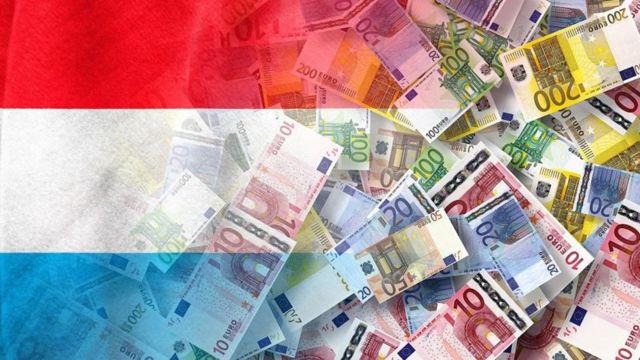10 richest countries in the world Zifahamu nchi 10 tajiri duniani,One may have some answer about these countries, but it may not be very accurate. And what kind of wealth are we talking about? But the measure that is commonly used is GDP, or GDP, which sums up the production of goods and services of the country in a certain period and is considered as an indicator to show the wealth of the area.
It is one of the most well-known and used measurements in the Economy, and, among other things, it helps the government know how much they will receive in taxes and, therefore, will know how much they can spend on services such as health and education.
According to October 2022 statistics from the International Monetary Fund and Visual Capitalist, the 10 richest countries in the world are here (check if there is something surprising to you):
10 richest countries in the world Zifahamu nchi 10 tajiri duniani,
- 10. Italy, with a wealth of 1.997 billion US dollars
- 9. Russia – 2.113 billion US dollars
- 8. Canada – 2.2 trillion dollars
- 7. France – 2.778 billion US dollars
- 6. Great Britain – 3.199 billion US dollars
- 5. India – 3.469 billion US dollars
- 4. Germany – 4.031 billion US dollars
- 3. Japan – 4.301 billion US dollars And now, rising to 14 trillion
- 2. China – 18.321 billion US dollars
- 1. United States – with 25,035 US Dollars
But what do these statistics mean?
Others may say these figures are not everything, they mean nothing. As some of those who object to the National GDP point out, the important thing here is about the nation or the people in the respective nation.

IMAGE SOURCE,GETTY IMAGES
Even its discoverer, the American economist Simon Kuznets, was not proud of it. His intention, in the 1930s, was to find a way to measure the economy as a whole in order to have a tool to help him out of the Great Depression.
The idea was to evaluate what actually had an effect, that is, to find what actually brought prosperity. But the second world war broke out and priorities changed: the immediate thing was not prosperity but life, and weapons were needed to protect it.
For the influential British economist John Maynard Keynes it was important to know what the economy could produce and what minimum amount people needed to spend, in order to know how much was left over to finance the war. Another type of calculation was needed, so the purpose of the measurement changed. And so it continued to be.
After the war ended, the United States needed to know how the recipients of its aid to build their countries affected by the war are doing, so they all started using the National GDP (GDP0) as a measure.
But later under the United Nations it became used as an international standard.

IMAGE SOURCE,GETTY IMAGES
A ‘per head’ or per person measurement
The measure of economic well-being that Kuznets wanted to develop ended up being a measure of activity in the economy. The difference is that there are many things that are not good for society but are good for the economy, so producing, for example, something that saves children’s lives is the same as producing bullets for weapons that kill them. Nor does it measure quality, only quantity.
When you pay for a train ticket, for example, that is counted in the calculation of the National GDP, what is not counted is if the train you are riding is old, crowded, the service is bad and dirty, or if it is a good train that arrived on time and is well maintained.
On the other hand, it says nothing about the distribution of wealth: a country can have a high GDP but also be unequal. Notice how much the list changes if the measure is GDP per capita , which measures the relationship between a nation’s income (via GDP over a given period) and the population of that area.
Although it does not show the truth either, it gives -according to experts- at least the closest reality of social and economic well-being. According to the IMF (2023), the 10 richest countries in that context are as follows;
1. Luxembourg
2. Singapore
3. Ireland
4. Qatar
5. Macau
6. Switzerland
7. Norway
8. United Arab Emirates
9. Brunei
10. United States
About country number one
Luxembourg, one of the smallest countries in the world, in terms of area and population, is the richest country on the planet according to this measure.

IMAGE SOURCE,GETTY IMAGES
It is the largest banking center in the world : more than 200 banks and major investments (1,000) operate in its capital.
As one of the countries with the most educated and highly skilled workforce in the world, meeting the demands of international organizations, Luxembourg is enriched by a diversified industrial and import-export economy based on financial services.
It also has small and medium enterprises, as well as a small but successful agricultural sector. Their high performance is due to the fact that citizens of neighboring countries, such as France, Germany and Belgium, work there but do not live there, so they contribute to GDP growth but are not included in the per capita calculation.
Luxembourg attracts foreign businesses due to low taxes; according to the newspapers Le Monde and Süddeutsche Zeitung, 90 percent of the companies registered in the country are owned by foreigners.
And its employees are well paid and are the highest earners.

IMAGE SOURCE,GETTY IMAGES
According to the National Institute of Statistics and Economic Research in Luxembourg, the minimum wage in the country is US$ 2,488 per month, so any unskilled worker can count on that amount.
$14.40 an hour is almost double the federal minimum wage of $7.25 in the United States, which tops the list as the richest country by GDP, and is second only to Australia’s minimum wage. ($14.54 per hour).
The average salary is $5,380 per month, but professionals working in banks, insurance companies, the energy industry and information technology earn more than that.
What about South America?
Well, you have to go down a bit in these lists to find countries in the Latin American and Caribbean region.
In terms of GDP per capita, the first country to appear is Guyana in South America, and the Caribbean island of Aruba, followed by four countries, Puerto Rico; Panama, Trinidad and Tobago, while Chile and Uruguay are separated by several positions.
In the lists in which the countries of South America appear in the top 10 are those that are “richest in natural resources”, while Brazil and Venezuela in the study are in the 7th and 10th places respectively.
SOURCE:BBC
